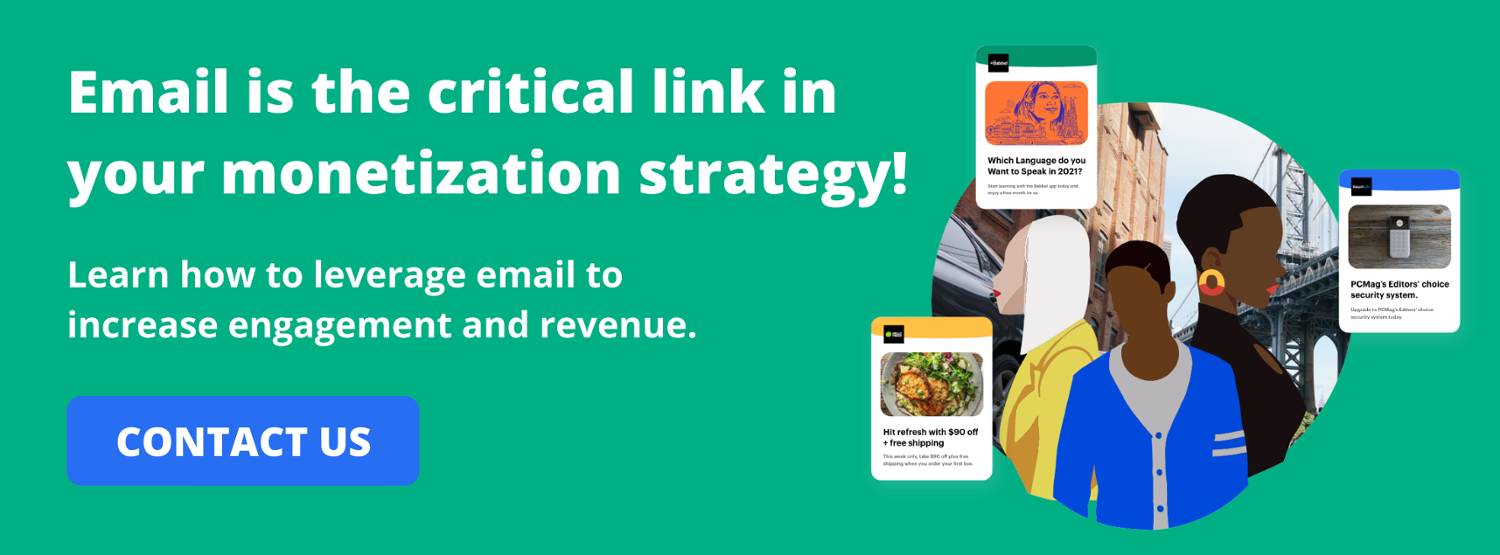It’s no secret that media outlets have been in a constant scramble over the last decade trying to compete with and keep pace with online innovation that seems relentlessly determined to erode their audience and revenue.
First, it was the move to online publishing that left outlets working overtime to convince advertisers of the value of their online audiences. Some have gone the way of the paywall, with mostly mediocre success. Then, an article in The New York Times called out the latest threat to media outlets’ ad revenue and audience traffic that was poised to steal audiences and advertisers’ dollars away from publishers’ sites: Social media.

Social Media Advertising
Social platforms — and Facebook in particular — were on a mission to become THE go-to source for everything the world needs to know, from restaurant recommendations to the latest #LOL and #fail videos to breaking news. And, perhaps it’s already been a win — already more than 40 percent of web traffic to publishers’ sites comes from Facebook.
But, Facebook has some publishers especially worried. While it appears to give media outlets a way to publish news directly to its mobile audience, ostensibly creating another distribution channel, it also means still more traffic moving away from publishers’ native sites. Facebook will capture any subsequent clicks from the user once they read the initial article. And, while there are some advertising opportunities, the monetization plan is still evolving.
That leaves a lot of publishers concerned about both the traffic and revenue loss. Data from NewsWhip indicates that shares of links to outside websites on Facebook have declined. According to the New York Times, publishers are responding with several strategies, including investment in TV and film and by dumping money into Facebook, hoping the revenue-sharing will keep them afloat.
Monetize Emails to Generate Revenue
While both of those are fine strategies, they also completely ignore one of the most valuable channels in the publishers’ audience reach: email.

Monetizing subscriber email campaigns can serve two critical functions for publishers: generating revenue AND audience engagement. Many publishers already send regular emails to drive traffic to their digital properties, and some do sell pixel space to advertisers. However, most are missing a valuable monetization opportunity that could generate new revenue from unused or underperforming real estate within their subscriber emails.
Email ads can generate up to $6 CPM, offsetting the cost of producing the campaigns themselves and generating new incremental revenue—revenue that could make up for the dollars lost to social. Not only do the ads generate real money, they’re also extremely easy to incorporate (if you monetize emails with Jeeng). Simply drop the Email Monetization HTML snippet into any existing template and the spaces automatically populate with targeted, personalized ads for each audience member.
Because they’re targeted based on recipients’ digital history and behavior, the ads are also highly relevant and engaging for audiences, not to mention trusted, because they come from a reputable source: the media outlet to which the recipient has already subscribed.
And, since publishers already “own” the email channel, they have the freedom to determine the frequency of sends, giving them the ability to easily increase traffic as they desire without being dependent on social media tools. The entire program is entirely within their control.
Jeeng provides a simple, set-it-and-forget-it way for publishers to fill the revenue gap left by social platforms by leveraging one of their most valuable assets — their email subscriber list.
Get in touch today to learn how to monetize emails, and let us show you how to get started.


